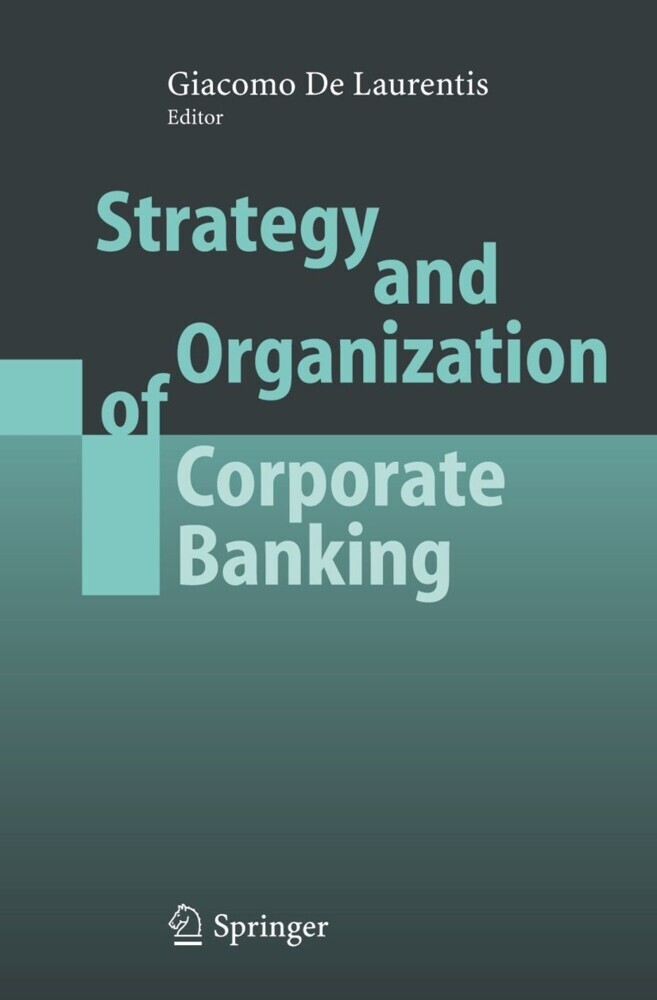Unlimited Liability of State-owned Banks under the EC-Rules of State Aids
Unlimited Liability of State-owned Banks under the EC-Rules of State Aids
The applicability of EC law of state aids to the state`s unlimited liability for Savings Banks and "Landesbanken" is controversial. Legal and political discussions following the Maastricht-II-Treaty tend to assume that liabilities have to be qualified as state aids. However, as the liabilities in question derive from public ownership, they have to be distinguished from securities for corporate debts which might be qualified as state aids under EC law. In this context the book discusses state aids to public companies and the private investor test of the EC Court of Justice. The authors question the EC Commission`s concept to quantify refinancing advantages which are supposed to be achieved by virtue of public liability.
I. Financial institutions under public law in the German banking system
1. The significance of public banks in Germany
2. Functions and significance of savings banks
a) Historic development of savings banks
b) Functions of savings banks
3. Functions and significance of Landesbanken
4. The profit realization principle rather than the profit maximization principle
II. Institutional burden and guarantor liability as structural characteristics of public commercial activity
1. Institutional burden
a) Origin and scope of institutional burden
b) Limits of institutional burden
2. Guarantor liability
a) Scope and origin of guarantor liability
b) The relationship between guarantor liability and institutional burden
c) The chain of liability for financial institutions under public law
3. Guarantor liability and comparable state guarantees in other member countries
a) Austria
b) Italy
c) Other state liability obligations for financial institutions in the European Union
III. Guarantor liability and institutional burden as a consequence of the administrative organizational discretion of the state
1. Permissibility of commercial activity of the state
2. Administrative forms and legal forms of public commercial activity
3. Administrative organizational discretion in the selection of the legal form
4. Preliminary conclusion: Guarantor liability and institutional burden as consequence of administrative organizational discretion
IV. Deposit protection systems and bank supervision in Germany
1. Objectives of bank supervision
2. Minimum capitalization requirements
3. Institution and deposit protection systems
4. State support of banks in the event of crisis?
5. Summary
C. Applicability of Article 92 EC Treaty
I. The concept of subsidies
II. Control measures of subsidy supervision
III. Applicability of Article 92 EC Treaty to public companies
D. Institutional burden and guarantor liability as a subsidy?
I. Sureties or guarantees as subsidies even in the absence of an actual case of liability
II. Guarantor liability and institutional burden as liability by virtue of organization
III. Subsidy law and property right
IV. Unlimited assumption of liability as common market behavior of a private investor?
1. The concept of private investor
a) The development of the legal concept of private investor by the Commission and the courts
b) Further development into the "reasonable investor" concept
c) Additional objectives for consideration in the private investor test
d) Entrepreneurial discretion of the state
2. The business operations of savings banks and Landesbanken as comparable to the common market behavior of private banks
3. The assumption of unlimited liability for savings banks and Landesbanken as common market behavior of a private investor
a) Forms of unlimited assumption of liability in banking transactions
aa) Establishment and acquisition of private companies
bb) Comfort letters
cc) Covenants to cover losses
dd) Right of recourse of the Deposit Guarantee Fund against the parent company
b) Assumption of liability under private law in comparison with guarantor liability and institutional burden
aa) Liability for all obligations with respect to all creditors
bb) Secondary liability
cc) Preliminary conclusion
c) No comparability due to the immeasurable financial resources of the state?
d) Preliminary conclusion
V. Institutional burden and guarantor liability as the expression of financing responsibility under corporate law
E. Institutional burden and guarantor liability as subsidies by virtue of refinancing advantages?
I. Presence of an economic benefit
1. Reduction of refinancing costs through institutional burden and guarantor liability
2. No benefit to public banks due to a de facto liability on the part of the state for all major banks
3. No benefit because of simultaneous financing disadvantages?
4. Reduction of possible refinancing advantages through bank supervision and guarantee of deposits
II. The assumption of unlimited liability as a common market form of financing for a private investor
1. Possible means of financing for private enterprises
2. Free choice between liability and capital, even for the state
3. The absence of a consideration as an indicator for a subsidy
a) The absence of a commission on guarantee as an indicator for a subsidy
b) Uncommonness of a direct consideration for private bank liability
4. Preliminary conclusion
III. Proof and quantification of a benefit
1. The quantification of "standing subsidies"
2. The Commission's attempt at quantification by means of a ratings comparison
3. Proof and quantification of a benefit by means of credit ratings
a) Description of the rating system
aa) The concept of ratings
bb) The rating of financial institutions under public law
cc) Test approach for a ratings comparison
b) The impact of ratings on decisions to grant credit or to invest
aa) Quality and objectivity of the rating
bb) Acceptance of the rating and its relevance to decision making
c) Perceptible raising of capital in ratings-influenced markets?
aa) The refinancing structure of Landesbanken
bb) The refinancing structure of savings banks
d) Downgrading of a rating for a hypothetical discontinuation of guarantor liability: The stand-alone rating
aa) The concept of the stand-alone rating
bb) Fitness of the stand-alone rating concept
e) An assessment of the calculation made by the Commission
f) Savings of interest expenses or of a commission on guarantee as a benefit?
IV. Conclusions
F. Actual contributions of capital as a subsidy?
I. Differentiation between the existence of and the execution of institutional burden
II. Actual contribution of capital in a crisis situation
III. Continuance of institutional burden in a crisis situation
G. Special features of the banking sector: Compatibility of subsidization "to relieve a major economic disturbance" (Art. 92,3(C))
I. Major economic disturbance
II. Special features of the banking sector
1. Measures of the state in the event of a general bank crisis
2. Measures of the state for the benefit of a single financial institution
3. Incompatibility of subsidies for purposes of preventing an economic disturbance
H. Distortion of competition and impairment of international trade
I. Distortion of competition
II. Impairment of international trade
I. Summary
I. Institutional burden and guarantor liability as subsidies?
II. Institutional burden and guarantor liability as subsidies by virtue of refinancing advantages?
III. Actual contributions of capital as subsidies?
IV. Special features of the banking sector: Compatibility of subsidization "to relieve a major economic disturbance" (Art. 92,3 (c) EC Treaty)?.
A. Statement of the issue
B. Institutional burden and guarantor liability as organizational concept of commercially active public institutionsI. Financial institutions under public law in the German banking system
1. The significance of public banks in Germany
2. Functions and significance of savings banks
a) Historic development of savings banks
b) Functions of savings banks
3. Functions and significance of Landesbanken
4. The profit realization principle rather than the profit maximization principle
II. Institutional burden and guarantor liability as structural characteristics of public commercial activity
1. Institutional burden
a) Origin and scope of institutional burden
b) Limits of institutional burden
2. Guarantor liability
a) Scope and origin of guarantor liability
b) The relationship between guarantor liability and institutional burden
c) The chain of liability for financial institutions under public law
3. Guarantor liability and comparable state guarantees in other member countries
a) Austria
b) Italy
c) Other state liability obligations for financial institutions in the European Union
III. Guarantor liability and institutional burden as a consequence of the administrative organizational discretion of the state
1. Permissibility of commercial activity of the state
2. Administrative forms and legal forms of public commercial activity
3. Administrative organizational discretion in the selection of the legal form
4. Preliminary conclusion: Guarantor liability and institutional burden as consequence of administrative organizational discretion
IV. Deposit protection systems and bank supervision in Germany
1. Objectives of bank supervision
2. Minimum capitalization requirements
3. Institution and deposit protection systems
4. State support of banks in the event of crisis?
5. Summary
C. Applicability of Article 92 EC Treaty
I. The concept of subsidies
II. Control measures of subsidy supervision
III. Applicability of Article 92 EC Treaty to public companies
D. Institutional burden and guarantor liability as a subsidy?
I. Sureties or guarantees as subsidies even in the absence of an actual case of liability
II. Guarantor liability and institutional burden as liability by virtue of organization
III. Subsidy law and property right
IV. Unlimited assumption of liability as common market behavior of a private investor?
1. The concept of private investor
a) The development of the legal concept of private investor by the Commission and the courts
b) Further development into the "reasonable investor" concept
c) Additional objectives for consideration in the private investor test
d) Entrepreneurial discretion of the state
2. The business operations of savings banks and Landesbanken as comparable to the common market behavior of private banks
3. The assumption of unlimited liability for savings banks and Landesbanken as common market behavior of a private investor
a) Forms of unlimited assumption of liability in banking transactions
aa) Establishment and acquisition of private companies
bb) Comfort letters
cc) Covenants to cover losses
dd) Right of recourse of the Deposit Guarantee Fund against the parent company
b) Assumption of liability under private law in comparison with guarantor liability and institutional burden
aa) Liability for all obligations with respect to all creditors
bb) Secondary liability
cc) Preliminary conclusion
c) No comparability due to the immeasurable financial resources of the state?
d) Preliminary conclusion
V. Institutional burden and guarantor liability as the expression of financing responsibility under corporate law
E. Institutional burden and guarantor liability as subsidies by virtue of refinancing advantages?
I. Presence of an economic benefit
1. Reduction of refinancing costs through institutional burden and guarantor liability
2. No benefit to public banks due to a de facto liability on the part of the state for all major banks
3. No benefit because of simultaneous financing disadvantages?
4. Reduction of possible refinancing advantages through bank supervision and guarantee of deposits
II. The assumption of unlimited liability as a common market form of financing for a private investor
1. Possible means of financing for private enterprises
2. Free choice between liability and capital, even for the state
3. The absence of a consideration as an indicator for a subsidy
a) The absence of a commission on guarantee as an indicator for a subsidy
b) Uncommonness of a direct consideration for private bank liability
4. Preliminary conclusion
III. Proof and quantification of a benefit
1. The quantification of "standing subsidies"
2. The Commission's attempt at quantification by means of a ratings comparison
3. Proof and quantification of a benefit by means of credit ratings
a) Description of the rating system
aa) The concept of ratings
bb) The rating of financial institutions under public law
cc) Test approach for a ratings comparison
b) The impact of ratings on decisions to grant credit or to invest
aa) Quality and objectivity of the rating
bb) Acceptance of the rating and its relevance to decision making
c) Perceptible raising of capital in ratings-influenced markets?
aa) The refinancing structure of Landesbanken
bb) The refinancing structure of savings banks
d) Downgrading of a rating for a hypothetical discontinuation of guarantor liability: The stand-alone rating
aa) The concept of the stand-alone rating
bb) Fitness of the stand-alone rating concept
e) An assessment of the calculation made by the Commission
f) Savings of interest expenses or of a commission on guarantee as a benefit?
IV. Conclusions
F. Actual contributions of capital as a subsidy?
I. Differentiation between the existence of and the execution of institutional burden
II. Actual contribution of capital in a crisis situation
III. Continuance of institutional burden in a crisis situation
G. Special features of the banking sector: Compatibility of subsidization "to relieve a major economic disturbance" (Art. 92,3(C))
I. Major economic disturbance
II. Special features of the banking sector
1. Measures of the state in the event of a general bank crisis
2. Measures of the state for the benefit of a single financial institution
3. Incompatibility of subsidies for purposes of preventing an economic disturbance
H. Distortion of competition and impairment of international trade
I. Distortion of competition
II. Impairment of international trade
I. Summary
I. Institutional burden and guarantor liability as subsidies?
II. Institutional burden and guarantor liability as subsidies by virtue of refinancing advantages?
III. Actual contributions of capital as subsidies?
IV. Special features of the banking sector: Compatibility of subsidization "to relieve a major economic disturbance" (Art. 92,3 (c) EC Treaty)?.
| ISBN | 978-3-642-95860-1 |
|---|---|
| Artikelnummer | 9783642958601 |
| Medientyp | Buch |
| Auflage | Softcover reprint of the original 1st ed. 1998 |
| Copyrightjahr | 2012 |
| Verlag | Springer, Berlin |
| Umfang | XII, 142 Seiten |
| Abbildungen | XII, 142 p. |
| Sprache | Englisch |










